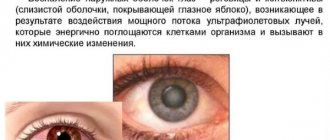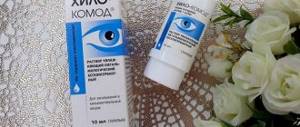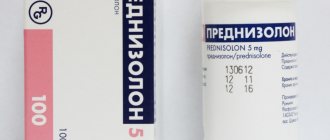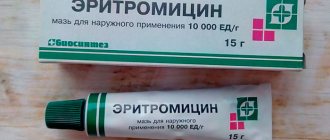Most eye diseases develop due to increased activity of pathogenic bacteria and viruses. To eliminate the problem, ophthalmologists prescribe appropriate drops to patients, including antibiotics, which, although not monotherapy, nevertheless form the basis of effective treatment.
It is important to understand that it is impossible to choose such a drug on your own, since its type will depend on the cause of the eye disease. This issue should be dealt with exclusively by a specialist after a thorough examination.
What are antibacterial antibiotic eye drops?
Antibiotic ophthalmic medications are topical, meaning they are not taken orally.
They are necessary when infectious pathologies occur, when the activity and spread of pathogenic microflora is observed on the surfaces of the eye tissues. Often, infection can develop in the internal part of the tissue. It is possible to eliminate pathogens only through specialized antibacterial drops. However, it is important to know that such drugs are rarely used to treat viral and fungal diseases of the visual system, since there are separate means for this - antiviral eye drops.
Thus, anti-inflammatory eye drops with an antibiotic differ in effectiveness and consistency, and may also include various main and auxiliary components. In modern ophthalmology, there are several groups of antibiotics to eliminate the activity of pathogenic bacteria, these include:
- tetracyclines;
- fluoroquinolones;
- macrolides.
Antibacterial eye drops: principle of action
Experts determine the effect of antibiotic drops on pathogenic microflora by destroying aggressive bacteria using chemical components in their composition.
Antibacterial drugs are of two types based on the principle of action: bacteriostatic and bactericidal. The former do not directly destroy harmful microorganisms, but act on their cells in such a way that they stop reproducing and gradually begin to die out. At the stages when the number of harmful bacteria becomes smaller, the patient’s immune system is involved in the fight against them.
The second - bactericidal (antibacterial) drops act directly on the cells of microorganisms, which instantly die. It is worth noting that extinct bacteria release toxic substances into human blood. Therefore, in order to eliminate this negative impact, experts prescribe treatment, which includes taking bacteriostatic drops.
In what cases are specialized antibacterial drops indicated?
Antibiotic medications for the eyes are prescribed by a doctor when infectious lesions of the visual apparatus are detected in a patient. Symptoms of such pathologies may be:
- mucous and purulent discharge from the eye;
- redness of the conjunctiva;
- itching and burning of the visual organs;
- drop in visual acuity;
- photophobia.
If the patient has the above-described symptoms, he is prescribed an examination, which helps to determine the types of microorganisms that have become pathogens.
Diseases that are accompanied by the symptoms described above include:
- Dacryocystitis is a blockage of the lacrimal canal. Pathology is most often observed in infants, and much less frequently in adults. A person experiences pain and burning in the area around the eye, and redness of the conjunctival membrane occurs.
- Barley is the formation of ulcers on the edges of the upper and lower eyelids. The affected areas appear cloudy in appearance, cause pain, and swell.
- Keratitis is an inflammation of the cornea with various etiologies. The disease can occur independently or be a consequence of complications of other infectious abnormalities.
- Infectious conjunctivitis of any type is a lesion of the conjunctival membrane. They can be observed in patients of any age if hygiene rules are not observed or if pathogenic microflora activity manifests against the background of weakened immunity.
- A creeping corneal ulcer is a disease that occurs after mechanical microtrauma to the surface of the eyeball. Often the cause of pathology is streptococcus, which is sensitive to most types of antibiotics.
- Blepharitis is a purulent discharge that can stick together the eyelids; the disease can be bacterial in nature.
In general, antibacterial drops can be prescribed in the event of any infectious processes, which, among other things, are revealed due to injuries suffered by the patient at home or after ophthalmological surgery.
Antiviral specialized eye drops
Discomfort and painful symptoms can be caused by a variety of factors affecting the eyes. Antiviral and antibacterial drugs differ in their effects and perform different functions.
The first are intended to eliminate viral diseases of the mucous membrane of the eyes. The medicine is evenly distributed throughout the mucous membrane and effectively affects viruses. Antiviral eye drops can be indicated for both adults and used to treat children. These funds can improve immunity, smooth out unpleasant symptoms of the disease, reduce the risk of complications and minimize the progression of pathology.
The main active component in specialized antiviral drops is interferon. This component is produced in the human body and allows the immune system to independently fight diseases. But sometimes the production of interferon is disrupted, so pathologies can progress. Exposure to antiviral drops allows you to restore the natural balance due to the artificial entry of interferon into the body, which blocks the reproduction of viruses. It is important to know that antiviral eye drops are used not only for therapeutic treatment, but are also actively used for the prevention of ophthalmic pathologies and their relapses.
Viral conjunctivitis: treatment
Viral conjunctivitis in adults is treated with antiviral drugs, but how to cure viral conjunctivitis in a child? First of all, you need to seek help from a qualified specialist to reduce the risk of complications. An important point in the treatment of children is the implementation of the treatment plan drawn up by the doctor, because in the first days of the disease, with obvious and painful symptoms, eye drops, for example, Ophthalmoferon, will need to be used at short intervals, up to 6 times a day. As the severity of symptoms weakens, the number of instillations of drops is reduced to 2-3 times.
Ophthalmoferon eye drops have a wide spectrum of action, they have antiviral and anesthetic effects. The drops contain interferon, which forms a protective barrier against viruses and stimulates cellular resistance, so that the virus does not spread further. The effectiveness of the drug is high, which avoids complications and shortens the period of the disease. You should not rely only on folk remedies, washing your eyes with herbal decoctions, because such actions can only slightly ease the symptoms, but are powerless against the spread of the virus. How to treat viral conjunctivitis in children? What medications can a pediatrician prescribe?
Viral conjunctivitis - treatment:
- Combined drugs aimed at relieving pain and inflammation of the eyes in children, swelling of the eyelids, restoring the normal state of the mucous membrane of the eye.
- Antiviral ointments - they must be placed behind the eyelid; if the swelling is severe and painful, then use the ointment after the pain-relieving drops begin to take effect, about twenty minutes later.
- Moisturizing drops - such drops eliminate the feeling of dry eyes, create a uniform tear film; for children it is better to choose preparations without preservatives, such as Hilo-Komod drops.
- Multivitamins - they are prescribed by the doctor, taking into account the child’s age, tendency to allergies, etc.
With viral conjunctivitis, the purulent discharge is scanty, and yet regular and careful care of the surface of the eyes is necessary to prevent the development of a bacterial infection. Use warm solutions of antiseptics (furacilin) to clean your eyes, carefully removing purulent discharge, moving from the outside of the eyelid to the inside. In order to protect other children from contracting viral conjunctivitis, communication between the sick child and the team must be limited for the entire period of treatment. Parents of the baby must observe hand hygiene and also provide the child with fresh scarves and towels, which must be ironed before use. If the course of viral conjunctivitis is complicated by a bacterial infection, then not only antiviral drugs will be needed, but also broad-spectrum antibiotics.
Antiviral eye drops: indications for use
Antimicrobial drugs for the treatment of the visual apparatus are prescribed when inflammatory processes caused by the presence of viruses are detected. The main diseases that can be caused by bacterial organisms (viruses) include:
- uveitis;
- conjunctivitis;
- keratoconjunctivitis;
- keratitis;
- iridocyclitis;
- neuritis.
In addition, antiviral agents for the eyes can be used to eliminate diseases caused by adenoviruses, piconaviruses, cytomegaloviruses, enteroviruses and herpes viruses. Before prescribing the drops, the specialist conducts an examination to identify the causative agent of the pathology.
Indications and contraindications
Indications for the use of antiviral eye drops include diseases caused by any viruses:
- conjunctivitis;
- keratoconjunctivitis;
- keratitis;
- iridocyclitis;
- uveitis;
- optic neuritis.
What does conjunctivitis look like?
Contraindications to use depend on the characteristics of the particular drug, but most often these are individual hypersensitivity to individual components of the drug, disorders of the hematopoietic system, severe dysfunction of the kidneys, liver, cardiovascular system, mental disorders and central nervous system. Some drops are prohibited for use during pregnancy and childhood, but if the expected benefit outweighs the possible risk to human health, the drugs can be used under the supervision of a doctor.
General principles of treatment of all types of conjunctivitis
Anti-inflammatory effective drops for adults
To treat bacterial eye infections in an adult patient, an ophthalmologist may prescribe the following eye drops:
- “Tsiprolet” is a product made on the basis of ciprofloxacin, which disinfects and blocks secondary infections in case of eye injuries and during the rehabilitation period after surgery. These specialized anti-inflammatory drops are characterized by side effects such as itching and blurred vision. However, such phenomena are considered normal if they do not occur for more than a few minutes.
- "Tobropt" - has bactericidal and bacteriostatic properties. The product can destroy not only bacterial organisms, but also some fungal ones. The course of treatment is prescribed based on the characteristics of the pathology and its course.
- "Albucid" is an antibiotic prescribed in combination with other drugs for the treatment of bacterial blepharitis, conjunctivitis and other infectious lesions. These drops are also prescribed for children, but you need to be aware that they can cause a burning sensation when instilled.
In what cases are medications prescribed?
Antiviral eye drops are prescribed when diseases of viral etiology are detected. Only an ophthalmologist can make an accurate diagnosis, who can detect the pathogen and select a remedy that eliminates the symptoms of the disease and prevents the development of complications.
Conjunctivitis
Viral conjunctivitis occurs when a virus enters the mucous membrane of the eye. This could be a herpes virus, adenovirus, atypical trachoma virus, smallpox virus, measles virus and other pathogens.
The difficulty of making a diagnosis in this case lies in the fact that all forms of conjunctivitis manifest themselves in the same way, but the treatment is completely different. Thus, antibacterial drops will not be effective for viral conjunctivitis, and antiviral drops will not be effective for bacterial conjunctivitis.
Various pathogens entering the mucous membrane of the eye cause inflammation, leading to redness, stinging, and watery eyes. General symptoms of illness are often present: fever, headaches, cough, runny nose, swollen lymph nodes.
It is noteworthy that the infection can not only come from the outside, but also become the cause of an untreated viral disease, as a result of which the virus begins to actively multiply and affect the organs of vision.
Uveitis
Cytomegalovirus, herpes zoster virus, Epstein-Bar virus, influenza viruses, parainfluenza, measles, rubella, mumps, adenoviruses, lymphocytic choriomeningitis viruses, chickenpox, human T-cell leukemia, hepatitis B, and hemorrhagic fevers have the ability to cause viral uveitis.
Uveitis is also an inflammatory disease, however, unlike conjunctivitis, it affects not only the mucous membrane, but also the choroid of the eye. It can occur at any age, and the source of the disease can be located both within the body and outside it.
Uveitis usually occurs against the background of a general decrease in immunity, often recurs and often leads to severe complications.
Keratitis
Viral keratitis is an even more serious disease in which the cornea is exposed to inflammation and infection. Symptoms of the disease include:
- blistering rashes;
- redness;
- swelling;
- corneal syndrome;
- ulceration and clouding of the cornea;
- decreased vision;
- neuralgic pain.
The disease often appears in childhood and young adulthood and is often the cause of corneal necrosis, abscesses and ulcerations. The deep form of keratitis is especially dangerous, affecting the entire stroma, in which the risk of vision loss is very high.
Useful video
How to treat keratitis:
Ophthalmoherpes
Ophthalmoherpes is the appearance of herpes on the eye. The disease is quite complex and dangerous, since many people mistake it for barley and self-medicate, leading the pathology to an advanced stage.
Antibacterial drops for children
Ophthalmologists approach the prescription of antibacterial drugs for the eyes of children with special attention, since some of them have a number of side effects. Most often, doctors combine several weak-acting drugs, which may include:
- "Maxitrol" - drops that have a bacteriostatic effect and at the same time destroy pathogenic microorganisms.
- Vigamox is a product made from the antibiotic moxifloxacin. It directly affects bacteria at the cellular level, blocking their reproduction.
- "Vitabact" - contains the active component picloxidine, which has an antibacterial and antimicrobial effect. Easily tolerated by children over 1 year of age and does not cause discomfort.
Antiviral eye drops for adults
The modern ophthalmological market offers a huge number of drugs, including inexpensive antiviral eye drops. These include: “Levomycetin”, “Florenal”, “Albucid”. Also, for adult patients, a specialist can prescribe the following effective remedies:
- "Ophthalmoferon" - intended to combat adenovirus and herpes. The drug not only effectively combats the nature of the pathology, but also performs an analgesic function.
- "Poludan" - destroys adenoviruses, eliminates herpes and increases local immunity.
- "Adgelon" - has a direct antiviral effect, blocks the proliferation of viruses, accelerates the healing process, increasing local immunity. The product is low toxic.
Recommended effective remedies
Remember! The list of antiviral drugs includes dozens of items. In this regard, choosing the most suitable remedy can be quite difficult.
Oftalmoferon
The drug is effective against eye diseases caused by herpes viruses and adenovirus .
Oftalmoferon not only effectively combats the nature of the disease, but also has a pronounced analgesic effect.
You can drip the solution from 3 to 8 times a day, depending on the severity of the clinical picture.
The usual course of treatment does not exceed 7-10 days.
If relief does not occur during this time, ophthalmologists recommend changing the drug.
Oftan I'm coming
The drug has a direct effect on viruses by disrupting the structure of their DNA . Due to existing contraindications, the medicine is not prescribed to children, as well as pregnant and lactating women.
Oftan Ida can be considered a fairly strong and effective remedy.
Note! The course of treatment with the drug is 21 days. In this case, at the initial stage of the disease, it is necessary to drip 1 drop of the product every hour during the day and every 2 hours at night.
After a pronounced improvement occurs, the frequency is reduced to 6-10 applications per day.
Poludan
The product not only affects viruses, but also increases local immunity . Poludan is usually prescribed for infections caused by the herpes virus or adenoviruses.
The drug is well tolerated by patients, however, it is not recommended for the treatment of children.
The drug is instilled into the affected eye for 7-10 days, 1 drop up to 8 times a day.
In some cases, the duration of treatment may be increased and the dosage adjusted.
However, all changes must be made exclusively by the attending physician.
Aktipol
It is worth noting! Actipol stimulates the production of natural interferon, thereby suppressing the activity of viruses.
This is a new generation product with a minimum of contraindications and side effects.
The only thing worth remembering when prescribing this drug is that it is not compatible with antimicrobial agents based on sulfacyl sodium .
The product is effective for conjunctivitis and diseases caused by the herpes virus.
The course of treatment is selected by the attending physician based on the specifics of the disease and the individual characteristics of the patient. You can drip one piece 3 to 8 times a day.
Adgelon
Despite the fact that the solutions do not have a direct antiviral effect, they are nevertheless able to block the activity of viruses and speed up the healing process .
The drug increases local immunity, promotes rapid restoration of the mucous membrane and minimizes the risk of complications.
The product is highly effective, low toxicity and almost completely free of contraindications . It can be used even by people prone to allergies.
The course of treatment with Adgelon is 14 days, during which it is necessary to instill 1-2 pieces up to 6-8 times a day.
Torbadex
Important! An effective remedy against many viral eye diseases. Tobradex is prescribed only to adults and on the recommendation of the treating ophthalmologist.
Since the drug is quite strong, the course of treatment does not exceed a week. Throughout therapy, it is necessary to instill 1 drop into the affected eye every 2 hours during the day.
Octoferon
These are not full-fledged eye drops, but a special solution that is used to prepare drops .
The duration of treatment with Octoferon is determined by the attending physician. During the day you need to instill 1 drop every 2 hours.
This frequency must be maintained until a lasting improvement occurs.
Antiviral drops for children's eyes
The main difference between antiviral drugs prescribed to children is a milder and non-toxic effect on the visual apparatus. Most of them can be used from birth. Popular eye drops for children include:
- "Okomistin" is used to treat viral diseases of the visual organs from birth. The drug has a wide range of actions and is effective in the presence of most viral strains.
- "Ganciclovir" - indicated in the presence of herpes and cytomegalovirus. It acts on the DNA of the virus, completely destroying it. It is important to know! These drops are indicated for children from 12 years of age.
- "Fucitalmic" - effectively eliminates viral diseases. Can be used even for babies, the drug is absolutely non-toxic.
Remember, the selection of medications can only be carried out by a specialist after identifying the cause of the disease. Independent choice of a drug can lead to irreversible processes and deterioration of the health of the visual system.
MagazinLinz.ru team
Inexpensive but effective drugs
The list of the most inexpensive antiviral eye drops that lead to lasting positive results includes:
- Levomycetin. Indicated for conjunctivitis, keratitis, eliminates acute inflammation within 2-3 hours after use.
- Florenal. Helps relieve symptoms and cure keratoconjunctivitis, herpetic eye lesions and adenoviral conjunctivitis.
- Albucid. The drug alleviates the patient’s condition well, relieves symptoms, but has no effect on the virus. Most effective at the initial stage of the disease.
It is prohibited to use the products without a doctor’s prescription.
Useful video
Antiviral agents - interferon inducers:









